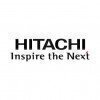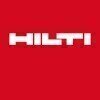Filter interviews by
Cummins Generator Technologies Painter Interview Questions and Answers
Cummins Generator Technologies Painter Interview Experiences
2 interviews found
I applied via Walk-in and was interviewed in Nov 2022. There was 1 interview round.
(2 Questions)
- Q1. What are the types of painiting defects
- Ans.
Types of painting defects include blistering, cracking, peeling, and fading.
Blistering: formation of bubbles on the painted surface due to improper surface preparation or application
Cracking: formation of lines or cracks in the paint film, often caused by movement in the substrate
Peeling: paint lifting off the surface, usually due to poor adhesion or moisture issues
Fading: loss of color intensity over time due to expos
- Q2. What are the oil spots
- Ans.
Oil spots are areas on a painting where the oil paint has become discolored or deteriorated over time.
Oil spots can be caused by the oxidation of the oil in the paint, leading to yellowing or darkening of the affected areas.
They can also be the result of improper drying or curing of the paint, causing it to remain tacky or sticky.
Oil spots may appear as shiny or matte patches on the surface of the painting, disrupting
Interview Preparation Tips
I applied via Walk-in and was interviewed in Nov 2021. There was 1 interview round.
(2 Questions)
- Q1. What are the types of painiting defects
- Ans.
Painting defects refer to imperfections or flaws that can occur during the painting process.
Blistering: Formation of bubbles or blisters on the painted surface due to moisture or heat.
Cracking: Development of cracks on the painted surface, often caused by improper surface preparation or excessive paint thickness.
Peeling: Paint film detaching from the surface, usually caused by poor adhesion or moisture issues.
Fading: L...
- Q2. What are the oil spots
- Ans.
Oil spots are areas on a painting where the oil paint has become transparent or translucent over time.
Oil spots are caused by the oil in the paint becoming more transparent or translucent over time.
They can appear as discolored or lighter areas on the painting.
Oil spots can be caused by a variety of factors, including the type of oil used in the paint, the age of the painting, and the conditions in which it was stored.
...
Interview Preparation Tips
Top trending discussions






Interview questions from similar companies

I applied via Recruitment Consultant and was interviewed in Jan 2021. There were 3 interview rounds.
Interview Questionnaire
2 Questions
- Q1. How to analyse consumption Gap?
- Ans.
Consumption gap analysis involves identifying and understanding the difference between actual and desired levels of consumption.
Identify the desired level of consumption
Determine the actual level of consumption
Calculate the gap by subtracting the actual level from the desired level
Analyze the reasons for the consumption gap
Identify potential solutions to bridge the gap
- Q2. Different types of inventory gaps in system
- Ans.
Inventory gaps in a system refer to discrepancies or shortages in the quantity or availability of items.
Stockouts: When an item is out of stock and unavailable for purchase or use.
Overstocking: When there is an excess of inventory beyond what is needed or can be sold.
Obsolete inventory: Items that are no longer in demand or have become outdated.
Shrinkage: Loss of inventory due to theft, damage, or other reasons.
Lead ti...
Interview Preparation Tips
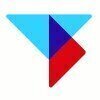
I appeared for an interview in Dec 2020.
Interview Questionnaire
1 Question
- Q1. Past experience
Interview Preparation Tips

I applied via Recruitment Consulltant and was interviewed before Aug 2021. There were 3 interview rounds.

(1 Question)
- Q1. Overall engineering knowledge is there or not.
(1 Question)
- Q1. Salary and attitude checking will be done.
Interview Preparation Tips
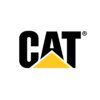
I applied via Campus Placement
Interview Preparation Tips
Experience: Resume short list was based on CGPA and the programming language skills.
Tips: knowing python could be helpful
General Tips: Know what the company you are going to apply expects from you and write your resume according to that
Skills: Python
Duration: 1
College Name: IIT Madras
Motivation: I am interested in coding and this is one of the major qualities that this company expects from the people who apply to this company.
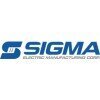
Trainee Interview Questions & Answers
Sigma Electric Manufacturing Corporationposted on 21 Aug 2020
I applied via Walk-in and was interviewed in Sep 2019. There was 1 interview round.
Interview Questionnaire
3 Questions
- Q1. What is measuring instruments
- Ans.
Measuring instruments are tools used to quantify physical quantities or properties.
Measuring instruments are used to obtain accurate and precise measurements.
They are commonly used in various fields such as physics, engineering, and manufacturing.
Examples of measuring instruments include rulers, thermometers, voltmeters, and spectrometers.
- Q2. What is calibration
- Ans.
Calibration is the process of adjusting or verifying the accuracy of an instrument or tool.
Calibration ensures that an instrument or tool is accurate and reliable.
It involves comparing the readings of the instrument to a known standard.
Calibration is important in industries such as manufacturing, engineering, and healthcare.
Examples of instruments that require calibration include thermometers, scales, and blood pressur
- Q3. What is cnc
- Ans.
CNC stands for Computer Numerical Control. It is a manufacturing process that uses computerized machines to create precise and complex shapes.
CNC machines are used in various industries such as aerospace, automotive, and medical.
They are programmed using CAD (Computer-Aided Design) software to create 2D or 3D designs.
CNC machines can cut, drill, mill, and shape materials such as metal, wood, and plastic.
They offer high...
Interview Preparation Tips

Interview Questionnaire
3 Questions
- Q1. For which reason u want to join a company?
- Ans.
I want to join a company because I believe it will provide me with opportunities for growth, learning, and a chance to contribute to a successful organization.
Opportunities for growth and learning
Contribution to a successful organization
Professional development and skill enhancement
Working with a talented team
Alignment with company values and mission
- Q2. Is you still doing study?
- Ans.
Yes, I am still studying.
Yes, I am currently pursuing my studies.
I am enrolled in a trainee program while continuing my education.
I am balancing my trainee responsibilities with my academic commitments.
I am actively learning and gaining knowledge in both practical and theoretical aspects.
I am dedicated to expanding my knowledge and skills through ongoing study.
- Q3. Is anybody have a job in your relationship in manufacturing company?

I applied via Recruitment Consultant and was interviewed in Aug 2020. There were 5 interview rounds.
Interview Questionnaire
1 Question
- Q1. Total 3 rounds are there, in 1st round hiring manager just question me about the current role and responsibility, questioning about the exactly test, tools and method I’m using to complete the task, 2nd ro...
Interview Preparation Tips
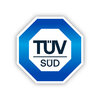
(1 Question)
- Q1. Need minimum degree qualification in textile
(1 Question)
- Q1. How long travel with TUV SUD
- Ans.
My travel experience with TUV SUD has been extensive, focusing on various projects and client engagements across different regions.
Traveled to multiple countries for client audits, including Germany and the USA.
Participated in training sessions in Asia to enhance team skills.
Attended industry conferences in Europe to stay updated on regulations.
Interview Preparation Tips
Cummins Generator Technologies Interview FAQs
Tell us how to improve this page.
Cummins Generator Technologies Interviews By Designations
- Cummins Generator Technologies Painter Interview Questions
- Cummins Generator Technologies Engineer Interview Questions
- Cummins Generator Technologies Junior Design Engineer Interview Questions
- Cummins Generator Technologies Trainee Mechanical Engineer Interview Questions
- Cummins Generator Technologies Diploma Trainee Engineer Interview Questions
- Cummins Generator Technologies Service Engineer Interview Questions
Interview Questions for Popular Designations
- Spray Painter Interview Questions
- Painting Supervisor Interview Questions
- Paint Shop Engineer Interview Questions
- Blasting and Painting Supervisor Interview Questions
- Manager - Paint Shop Interview Questions
- Paintshop Production Engineer Interview Questions
- QA Engineer Interview Questions
- Paint Shop Supervisor Interview Questions
- Show more
Cummins Generator Technologies Painter Interview Process
based on 1 interview
Interview experience
Interview Questions from Similar Companies
Cummins Generator Technologies Painter Reviews and Ratings
based on 1 review
Rating in categories
|
Junior Shop Manager
97
salaries
| ₹2.6 L/yr - ₹7 L/yr |
|
Junior Manager
28
salaries
| ₹3.8 L/yr - ₹9.2 L/yr |
|
Diploma Trainee Engineer
24
salaries
| ₹1.6 L/yr - ₹2.7 L/yr |
|
Design Engineer
15
salaries
| ₹1.8 L/yr - ₹6.5 L/yr |
|
Service Engineer
10
salaries
| ₹1.1 L/yr - ₹4 L/yr |

John Deere

KONE

Caterpillar Inc

Sigma Electric Manufacturing Corporation
- Home >
- Interviews >
- Cummins Generator Technologies Interview Questions >
- Cummins Generator Technologies Painter Interview Questions






